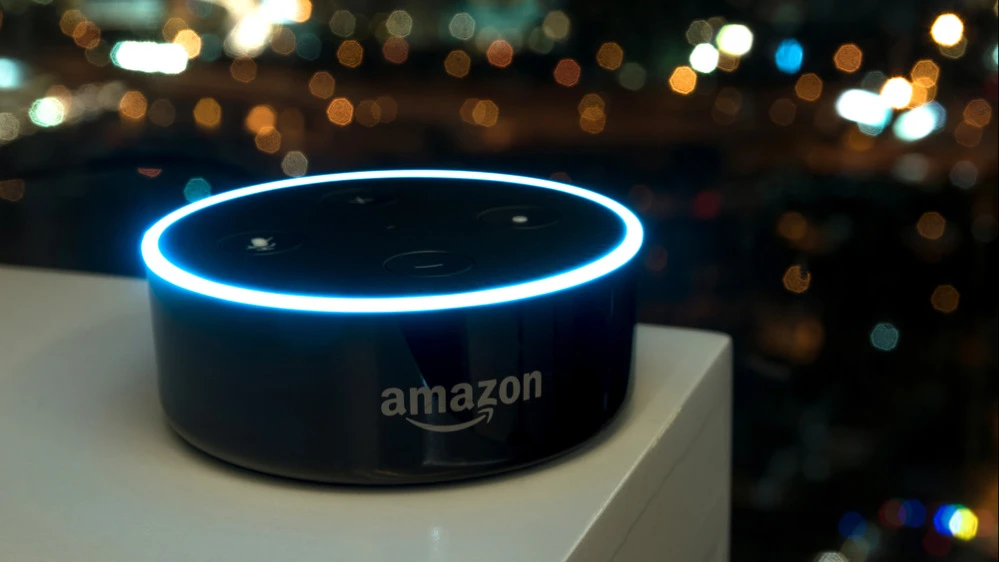Amazon showed off its updated AI devices. Will it be able to compete with Apple and Meta?
To truly become a leader in AI devices, Amazon needs a technological breakthrough, according to Bloomberg.

Amazon, the largest US online retailer, has unveiled updated devices with an updated version of its Alexa+ voice assistant, which works as an AI. The company's long-term goal is to reach a new level in the category of consumer devices, including mobile gadgets with integrated artificial intelligence. In this market, Amazon will have to compete with Apple, Meta and OpenAI. The company's shares were down more than 1% in trading Tuesday, but investment bank Mizuho recommended buying them, setting one of Wall Street's highest target prices.
Details
On September 30, Amazon revealed its updated lineup of AI-enabled devices: Echo speakers, Kindle readers, TV accessories and home security systems. Most models became more expensive than their predecessors, for example, the Echo Show 8 smart display costs $80 more than the previous generation, and the new Kindle Scribe with a color screen became the most expensive reader in the company's history - it is about $200 more expensive than other models.
At the same time, Amazon launched its next-generation voice assistant Alexa+ with artificial intelligence integration. New devices come with it by default, including the $40 Fire TV Stick 4K, the most affordable TV set-top box with the new operating system. Echo Show is now able to recognize who has approached the device and automatically display personalized content. Kindle can download user notes and use them in voice requests via Alexa.
Investors reacted weakly to the presentation, with Amazon shares falling 1.2% to $219.6 in Tuesday trading and continuing to decline another 0.2% in the aftermarket. Since the beginning of the year, the price of Amazon's securities has remained virtually unchanged, while the S&P 500 broad market index has risen almost 14%.
Context
"In a world where people are chained to their smartphones and computer screens, Amazon wants to steer users in a different direction," Bloomberg writes. That strategy involves creating artificial intelligence-based devices that run in the background and require less screen time.
Other companies, including Apple, Alphabet and Meta Platforms, are also chasing that goal. Apple just a few weeks ago unveiled the biggest updates to the iPhone in years at the launch event, confirming that the smartphone remains a relevant form factor, Bloomberg notes. A little earlier, Meta released new smart glasses with a display. OpenAI is also planning to enter the mobile device market: ex-Apple designer Jony Ive is developing a whole series of AI-oriented gadgets for it, which will be produced by one of Apple's suppliers.
Amazon, in turn, is working on new devices, including Alexa-enabled headphones and smart glasses. In August, the online retailer acquired Bee, a startup that has developed a smart bracelet: it records everything a user hears during the day and generates a summary in an app. In the future, the device is planned to be updated and linked to Alexa+.
According to Panos Panay, Amazon's senior vice president overseeing Devices & Services, Amazon's long-term goal is to break new ground in the consumer device category, including mobile devices with integrated AI.
"We're in for a complete paradigm shift in user interfaces. I'm convinced of the future of background AI, of just being able to talk to a device - wherever you want, whenever you want, however you want. And that will require new form factors," Panay said at the presentation (quoted by Bloomberg).
But to truly become a leader in AI devices, Amazon needs to achieve a technological breakthrough that goes beyond its existing lineup of devices, Bloomberg summarizes.
Mizuho Evaluation
For his part, Mizuho analyst Lloyd Walmsley believes Amazon still has some catching up to do in the AI race - driven by booming revenue growth in its AWS cloud division. Walmsley this week began coverage of Amazon stock with an "Above Market" rating, which amounts to a buy recommendation on the stock. He also posted a $300 target price, expecting the stock to rise 36.6% from its closing price on Sept. 30. Mizuho's target price was one of the highest on Wall Street, according to FactSet.
According to the analyst's assessment, the development of the AWS cloud service was previously hampered by a lack of computing power. But the launch of Amazon's Project Rainier data centers in the second half of 2025 and in 2026 should eliminate these bottlenecks. Walmsley predicts that the AI-computing segment will bring the company $17 billion in revenue in 2026 (against an expected $8 billion in 2025) and could reach $34 billion by 2028.
Another major catalyst for Amazon stock could be improved margins in the retail segment. According to the analyst, "improved same-day or next-day delivery capabilities should help Amazon unlock significant opportunities." The company is also investing in automating fulfillment centers, and Walmsley believes these investments will continue to deliver returns into 2026.
According to MarketWatch, of the 72 analysts tracking the online retailer's securities, 69 recommend buying them, and three recommend holding them in a portfolio. There is no advice to sell. The Wall Street consensus price target is $264.8, which is 20% above the stock's current value.
This article was AI-translated and verified by a human editor
